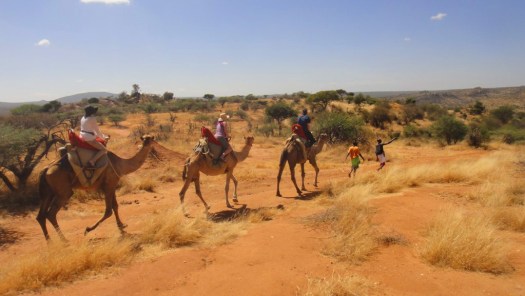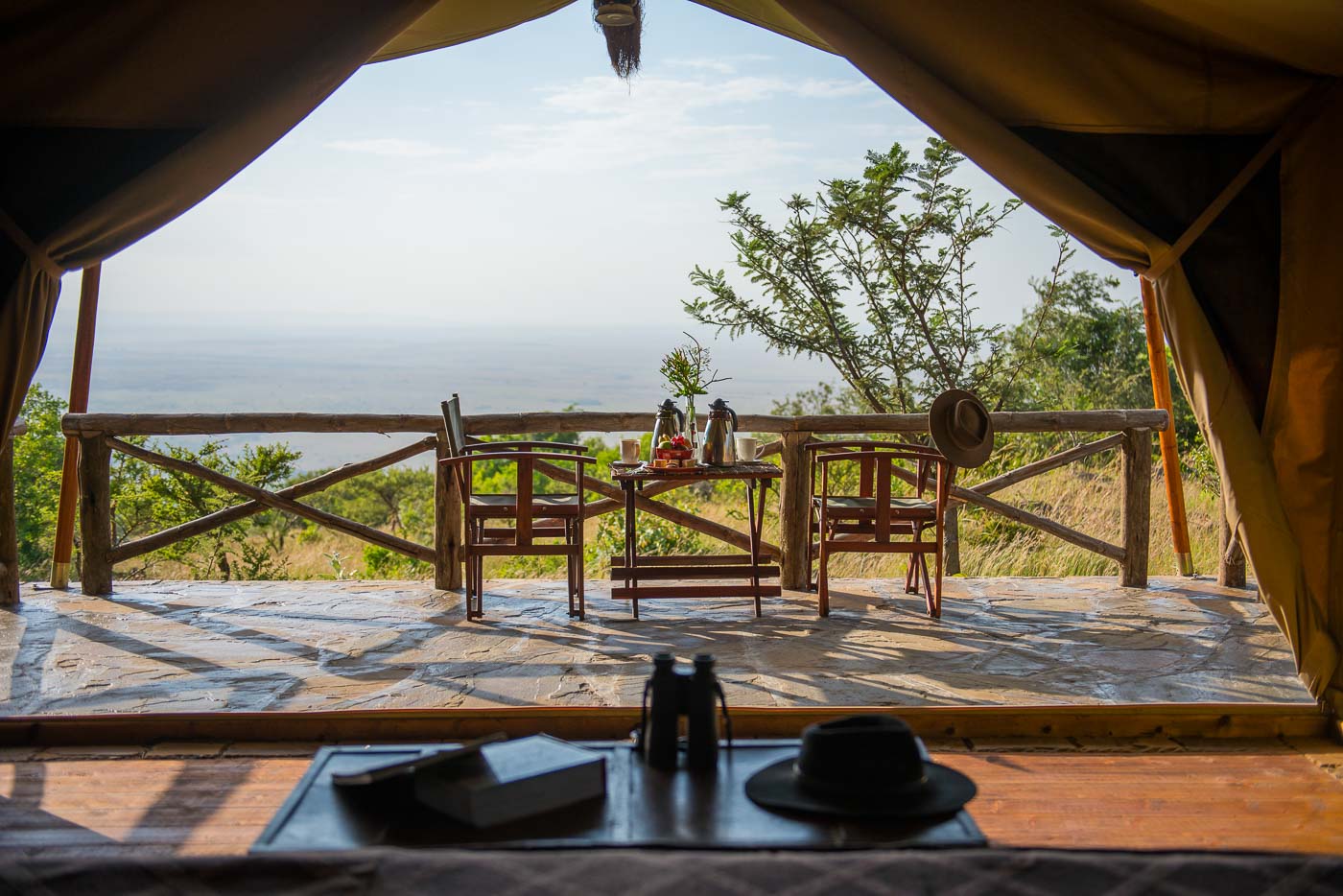The classic safari in Kenya, at least for first-timers, usually involves going to Maasai Mara National Park, where one of many safari vehicles brings a group of camera-toting tourists on game drives in search of Africa’s Big Five. However, this southwestern Kenyan park of the Serengeti plains isn’t the only destination in the country; about 150 miles north of capital Nairobi is the Laikipia Plateau, the less frequented “high country” in central Kenya, which was an entirely different experience for me — particularly during my time at the independently-run Sabuk Lodge.

For instance, on one morning game drive, I found myself not in the seat of a Land Cruiser, but on the hump of a camel. Verity Williams and her staff at Sabuk Lodge pride themselves on their camel safari — a greener, more intimate, and undoubtedly quieter experience than being in a gas-powered vehicle. My group and I journeyed across the semi-arid plateau, and it was like being in a caravan of ancient times, except for the brief moment we temporarily dismounted the fleshy mounds to go on foot, when we encountered a herd of elephants at a nearby watering hole. (I was told that a group of domesticated camels carrying passengers usually freaks the wild pachyderms out, and we cautiously toned down our presence.)

However, going on foot was also a part of the privilege of being there. Because the lodge is on a private, unfenced conservation area — not in a national park — there’s much more freedom to roam and be a part of the environment. This didn’t mean we were sitting ducks out there for predators on the prowl. Every time I journeyed out in the bush with my group — may it have been on a wildlife hike or a stroll to a sundowner with a spectacular view — I was always in the good hands of a guide or a rifleman who kept watch of any threat in the distance.

However, I wasn’t obsessing about any of the potential dangers in the wild when I was out there; the beauty of the landscape was way too distracting for that. The grand panorama of amber grasslands stretched out to the horizon whenever I gazed out from the vantage point of my room in the cliffside lodge. Each quarters is its own viewing deck, like a diorama made of natural elements, in that one side of the room is open, allowing for unobstructed views of the plateau and the nearby Ewaso Nyiro River below — even when waking up comfortably in bed. The views from some rooms are so inspiring; they’ve encouraged several marriage proposals.

For me, the scenery was definitely Sabuk Lodge’s biggest selling point, one they’ve capitalized on for years. However, as a traveler curious about social responsibility, it was good to hear that they also contribute back to the local society they’ve become a part of. Most of Ms. Williams’ staff come from the local Samburu and Laikipiak Maasai tribes, and they’re very much involved with helping develop the community. In fact, they recently built a dormitory for the local school.

Visiting these Maasai communities was a highlight of my trip. I’ll admit I was a little cynical before going there, having been conditioned to believe a visit to a dancing Maasai tribe is “touristy” — akin to a hotel culture show. However, once I visited the actual villages where the locals live, I realized I was having an authentic glimpse of central Kenya. Talking with school children in their classrooms was inspiring. And when several of the tribespeople inevitably demonstrated their Maasai dance in colorful garb, it felt less like they were “on stage.”

Many people who visit Kenya do it for their “once in a lifetime” trip, never to go back after that one safari in the Maasai Mara. However, for those who can’t get enough of Kenya, Sabuk Lodge in the less-crowded Laikipia Plateau — with its awe-inspiring views and experiences — is one option that’s well worth visiting — or revisiting.
Photo Credit: Erik Trinidad



 Image Credit: Save The Rhino Trust Namibia
Image Credit: Save The Rhino Trust Namibia Image Credit: AfriCat Foundation
Image Credit: AfriCat Foundation Image Credit: Mustang Monument Wild Horse Eco-Resort
Image Credit: Mustang Monument Wild Horse Eco-Resort Image Credit: Maasai Wilderness Conservation Trust
Image Credit: Maasai Wilderness Conservation Trust





